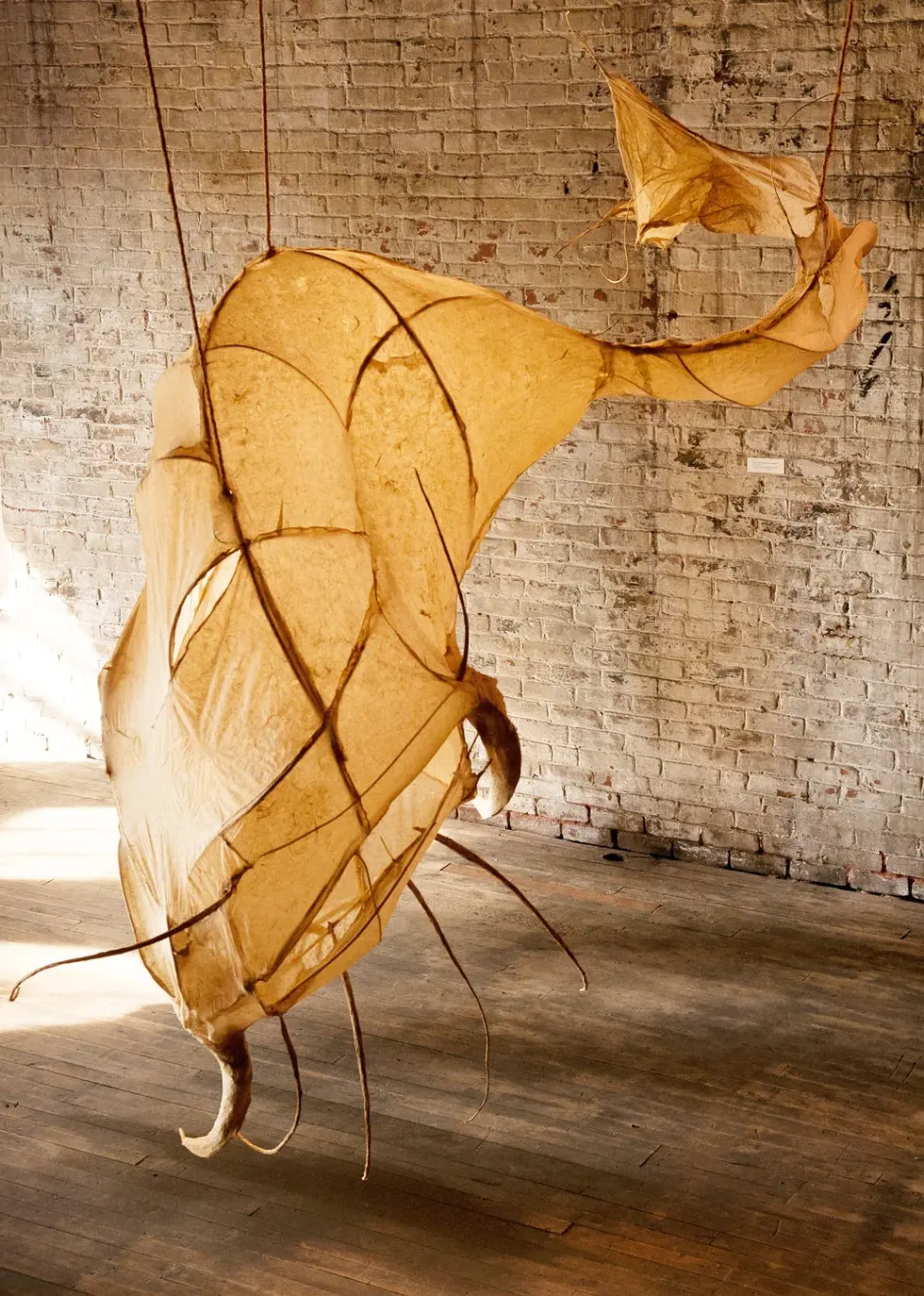
Create Your First Project
Start adding your projects to your portfolio. Click on "Manage Projects" to get started
Corn and the Connecticut River
Location
Porter-Phelps-Huntington Museum, Hadley, MA
Date
August-October 2011
A paper odyssey/art installation
During the planning stages of this installation, Susan Lisk, director of the Porter Phelps Huntington Foundation shared with me a story of the Connecticut River flooding the cornfield in the early spring, such that there were dozens of carp somewhat trapped after the waters receded. She, accompanied by others, trekked down to where they lay imprisoned in an attempt to collect them in corn baskets to then drag or carry them back to the river so they could swim away, freed from their constraints, describing an image I found at once breathtaking and inspiring, for the work I had begun.
For the relationship between corn and the Connecticut River is at once personal, historical, intense, and fascinating, dating back thousands of years. It then occurred to me that if one perceives time as an accordion, folding up on itself, creating threads of contact having more to do with sensory experience, one may well be reminded of other such sensory memories such as listening to a drum or a flute, planting corn kernels or seeds, tasting a cooked ear, smelling catfish frying, or grilling salmon, and thus my vision for this piece took on a more perceptible shape.
It is a long-held Mayan belief that people are made of and from corn. Today there are those whom consider themselves “people of corn” across North, Central and South America, because cultural beliefs color both group and individual perception. An individual’s broader perspective is a critical aspect of comprehension — of one’s self, one’s life, and all that one perceives. As such, the works in this exhibit require more than one point of view to fully appreciate the resulting work. This installation thus invites you to alter your position, perceive that the lighting is altered, take pains to alter it by your physical perspective, allow yourself to make a joyful and perhaps uninhibited sound, return for a fresh viewing on another day, in a different time of day or weather, savoring what you have just read or eaten, and allow yourself to be touched in a unique and personal manner by this work, which was created for such individual experiences of appreciation.










